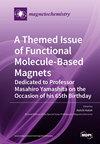机器学习和金刚石纳米传感在高灵敏度严重急性呼吸系统综合征冠状病毒2型诊断中的应用前景
IF 2.6
4区 化学
Q2 CHEMISTRY, INORGANIC & NUCLEAR
引用次数: 0
摘要
2019年急性呼吸综合征冠状病毒病(SARS-CoV)(包括其流行变种)在全球造成的死亡人数为6812,785人(worldometer.com于2023年3月14日访问)。管理大流行需要快速、可靠、具有成本效益和准确的诊断程序。在这方面,我们关注使用荧光纳米金刚石进行生物传感的量子自旋磁共振检测,确保基于人工智能的生物传感器设计在个体患者水平上的疾病预测和数据解释的好处。我们整理了基于荧光纳米金刚石的SARS-CoV-2检测的相关文献,并简要描述了病毒在细胞中的增殖和孵育。我们还提出了人工智能增强SARS-CoV-2生物传感的潜在有效策略。简要概述了金刚石磁性纳米传感人工智能算法的实现,涵盖了该路线图的优势、挑战和前景。一些突变是α、β、γ、δ和欧米克隆,可能的症状是流鼻涕、发烧、喉咙痛、腹泻和呼吸困难,并伴有剧烈的身体疼痛。建议的战略将提供可靠和改进的诊断方法,以应对sars冠状病毒突变可能造成的威胁,包括未来可能出现的病原体。本文章由计算机程序翻译,如有差异,请以英文原文为准。
Prospects of Using Machine Learning and Diamond Nanosensing for High Sensitivity SARS-CoV-2 Diagnosis
The worldwide death toll claimed by Acute Respiratory Syndrome Coronavirus Disease 2019 (SARS-CoV), including its prevailed variants, is 6,812,785 (worldometer.com accessed on 14 March 2023). Rapid, reliable, cost-effective, and accurate diagnostic procedures are required to manage pandemics. In this regard, we bring attention to quantum spin magnetic resonance detection using fluorescent nanodiamonds for biosensing, ensuring the benefits of artificial intelligence-based biosensor design on an individual patient level for disease prediction and data interpretation. We compile the relevant literature regarding fluorescent nanodiamonds-based SARS-CoV-2 detection along with a short description of viral proliferation and incubation in the cells. We also propose a potentially effective strategy for artificial intelligence-enhanced SARS-CoV-2 biosensing. A concise overview of the implementation of artificial intelligence algorithms with diamond magnetic nanosensing is included, covering this roadmap’s benefits, challenges, and prospects. Some mutations are alpha, beta, gamma, delta, and Omicron with possible symptoms, viz. runny nose, fever, sore throat, diarrhea, and difficulty breathing accompanied by severe body pain. The recommended strategy would deliver reliable and improved diagnostics against possible threats due to SARS-CoV mutations, including possible pathogens in the future.
求助全文
通过发布文献求助,成功后即可免费获取论文全文。
去求助
来源期刊

Magnetochemistry
Chemistry-Chemistry (miscellaneous)
CiteScore
3.90
自引率
11.10%
发文量
145
审稿时长
11 weeks
期刊介绍:
Magnetochemistry (ISSN 2312-7481) is a unique international, scientific open access journal on molecular magnetism, the relationship between chemical structure and magnetism and magnetic materials. Magnetochemistry publishes research articles, short communications and reviews. Our aim is to encourage scientists to publish their experimental and theoretical results in as much detail as possible. Therefore, there is no restriction on the length of the papers. The full experimental details must be provided so that the results can be reproduced.
 求助内容:
求助内容: 应助结果提醒方式:
应助结果提醒方式:


